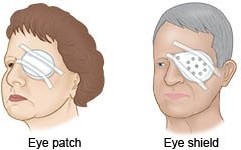An older client with Alzheimer's disease is confused and asking the nurse to call their mother who is deceased. Which nonpharmacological intervention should the nurse implement?
Clarify reality with the client about delusional thoughts.
Reduce the client's interaction with others during day.
Use distraction and therapeutic communication skills.
Awaken the client for reality checks every 4 hours at night.
The Correct Answer is C
A) Incorrect- Clarify reality with the client about delusional thoughts: Attempting to correct the client's delusional thoughts might cause frustration and agitation. Clients with Alzheimer's disease may have difficulty comprehending and retaining reality-based information.
B) Incorrect- Reduce the client's interaction with others during the day: Social interaction is important for clients with Alzheimer's disease to maintain engagement and prevent feelings of isolation. Reducing interaction could worsen their emotional well-being.
C) Correct- Clients with Alzheimer's disease often experience cognitive impairments and may have delusional thoughts or confusion, such as believing deceased loved ones are still alive. Nonpharmacological interventions are crucial to provide comfort and manage challenging behaviors. Distraction techniques involve redirecting the client's attention away from the delusion and onto a different, engaging activity. This can help decrease distress and anxiety related to their delusional thoughts. Therapeutic communication skills, such as validating the client's feelings and emotions, can also be beneficial. Simply telling the client that their mother is deceased may cause distress and confusion. Instead, providing comfort, empathizing with their emotions, and redirecting their focus can be more effective in managing the situation.
D) Incorrect- Awaken the client for reality checks every 4 hours at night: Disrupting the client's sleep schedule could lead to increased confusion and restlessness. It's important to provide a calm and consistent sleep routine for individuals with Alzheimer's disease.
Nursing Test Bank
Naxlex Comprehensive Predictor Exams
Related Questions
Correct Answer is ["A","E","F"]
Explanation
Correct- This statement indicates a misunderstanding about the relationship between acute stress disorder (ASD) and post-traumatic stress disorder (PTSD). While both are related to traumatic events, ASD is considered an initial reaction that typically resolves within three days to four weeks, whereas PTSD involves symptoms persisting for more than a month. The nurse should provide education on the different timelines and criteria for these disorders.
Incorrect- This statement reflects a proactive approach to managing symptoms and stress through holistic methods like meditation. There's no need for follow-up teaching here.
Incorrect- This statement shows the client's recognition of the potential benefits of therapy in managing their thoughts and emotions. It indicates their willingness to engage in effective coping strategies.
Incorrect- This statement reflects an understanding that their response to the traumatic event is not uncommon and that others may have similar reactions. It's a valid perspective on shared experiences during challenging times.
Correct- The statement "This diagnosis means that I am crazy" reflects a common misconception about mental health diagnoses. The term "crazy" is stigmatizing and does not accurately represent the nature of mental health conditions. The nurse should offer reassurance that a diagnosis of ASD does not define a person's overall mental state and emphasize the importance of seeking help without judgment.
Correct- The statement "I will probably need to be on medication for the rest of my life" implies a sense of hopelessness or a narrow perspective about treatment options. While medication might be part of the treatment plan for some individuals, it's important to emphasize that treatment is personalized and can include a combination of therapies, coping strategies, and lifestyle adjustments. The nurse should encourage an open discussion about treatment goals and possibilities.
Correct Answer is B
Explanation
After retinal detachment surgery, it is crucial to protect the eye and the surgical repair site from accidental trauma or pressure. Providing an eye shield helps to shield the eye during sleep when the client may not have conscious control over their movements.
This can help prevent inadvertent rubbing or bumping of the eye, which could potentially disrupt the surgical repair and hinder the healing process.
Obtaining vital signs every 2 hours during hospitalization is a routine nursing intervention for postoperative care in general but is not specific to retinal detachment surgery. The frequency of vital sign monitoring may vary depending on the client's overall condition and the healthcare provider's orders.
Teaching a family member to administer eye drops may be necessary for the client's ongoing care, but it is not specifically related to the immediate postoperative period. Eye drop administration instructions can be provided as part of the client's discharge teaching.
Encouraging deep breathing and coughing exercises is a general postoperative intervention that promotes respiratory function and helps prevent complications such as pneumonia. While important for overall postoperative care, it is not specific to retinal detachment surgery.

Whether you are a student looking to ace your exams or a practicing nurse seeking to enhance your expertise , our nursing education contents will empower you with the confidence and competence to make a difference in the lives of patients and become a respected leader in the healthcare field.
Visit Naxlex, invest in your future and unlock endless possibilities with our unparalleled nursing education contents today
Report Wrong Answer on the Current Question
Do you disagree with the answer? If yes, what is your expected answer? Explain.
Kindly be descriptive with the issue you are facing.
